All products featured are independently chosen by us. However, SoundGuys may receive a commission on orders placed through its retail links. See our ethics statement.
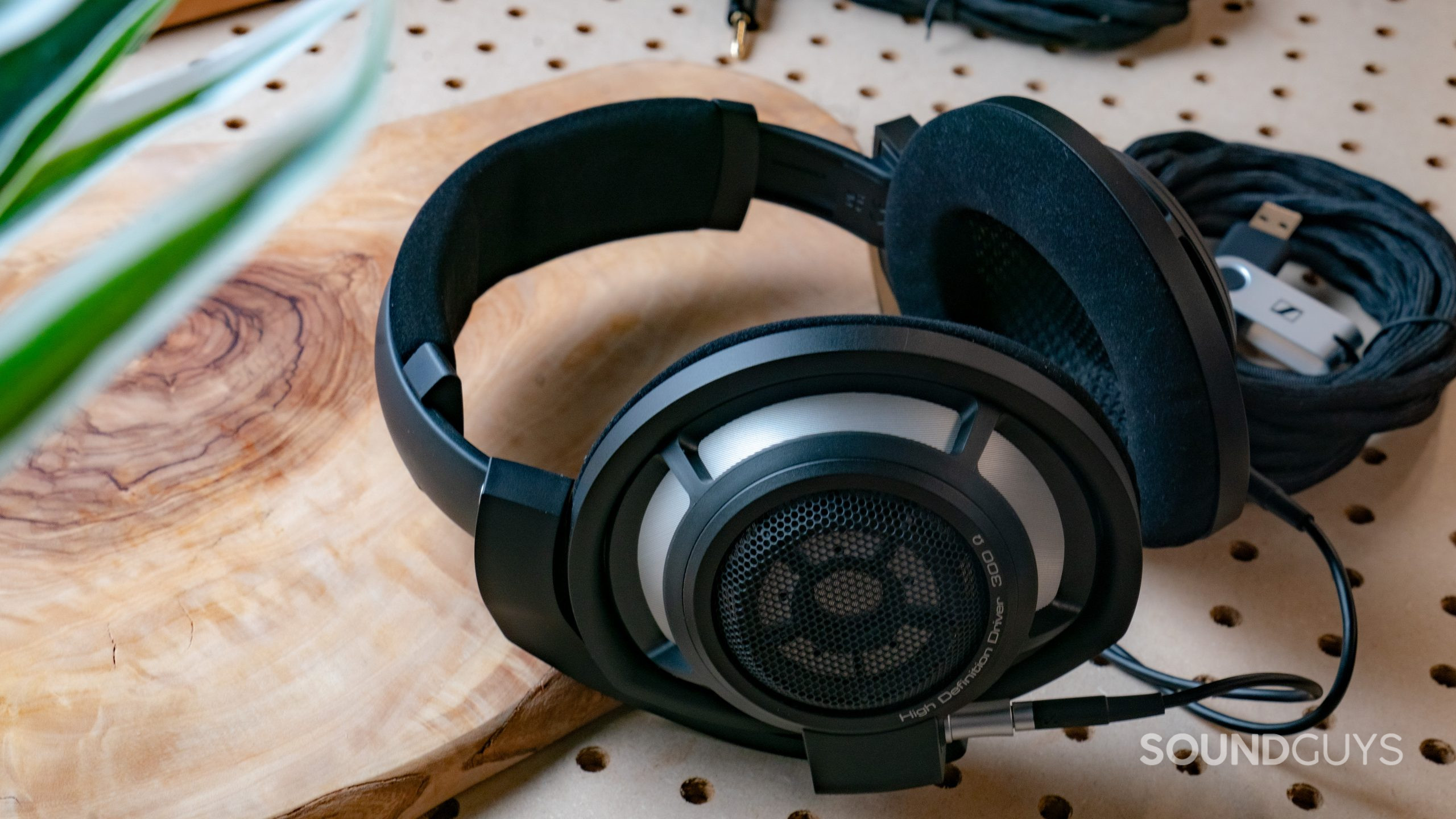
Sennheiser HD 800 S review
February 15, 2024
HD 800 S
Anyone with a lot of money burning a hole in their pocket will tend to look for the “best” things to grab, but what’s “best” is a moving target with headphones. However, some of the most common consumer headphones to enter that conversation are models from Sennheiser’s HD 800 line. But does the Sennheiser HD 800 S warrant that reputation? We took a week to find out.
Editor’s note: This article was updated on February 15, 2024, to add MDAQS testing data.
The Sennheiser HD 800 S is a high-end product for audiophiles looking for their “endgame” headphones, as long as they aren’t averse to spending more than is probably necessary. The product is very much a part of Sennheiser’s “halo” line of headphones, meaning it’s meant to be priced as a top-of-the-line product amongst the already higher end offerings from the company.
What’s it like to use the Sennheiser HD 800 S?
Cracking open the box, you’ll be greeted by your headphones, a 3-meter TRS cable, a 3 meter Pentaconn cable, carrying pouch, and assorted documentation. Much like with other high-end headphones, the Sennheiser HD 800 S doesn’t offer much in the way of extras. Unlike other high-end headphones, there’s no leather, gold leaf, or any other indication that what you’re buying is a luxury product. The Sennheiser HD 800 S very much looks the part of a well-engineered tool rather than anything meant to be a status symbol (even though it most certainly is).
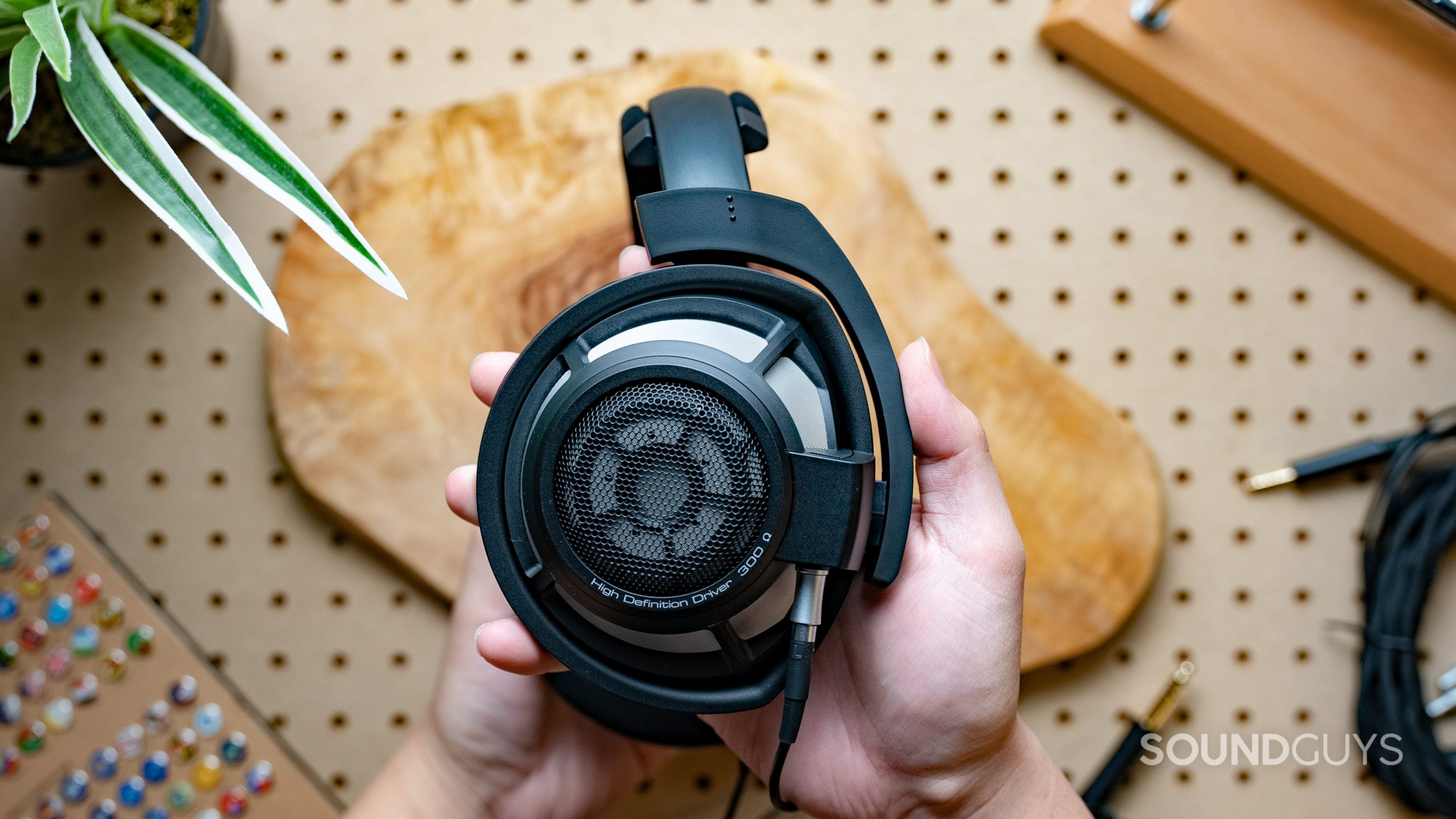
Sennheiser’s HD 800 line is quite unique in design, with an ear cup shaped more like a hemisphere than an ovoid, unlike other headphones. However, the design is where the headphones really make their name: those huge ear cups are built to accommodate a wide range of heads, and maximize the space around your ears. The angled drivers within and the insanely deep cup mean your outer ear shouldn’t hit the driver mesh, and that allows the Sennheiser HD 800 S to take advantage of your own biology to preserve spatial cues in the reproduction.
While it weighs 330g without a cable attached, you shouldn’t notice any issues with mass when you have ear cups and a band that huge to spread the weight across an enormous area on your head. Heat buildup doesn’t seem to be much of an issue, and the velour ear pads are mercifully soft on your noggin. I was able to use the Sennheiser HD 800 S for over four hours straight without any discomfort, and definitely could have gone longer if it weren’t for the demands of a screaming infant. It’s easily one of the most comfortable headphones I’ve ever worn.
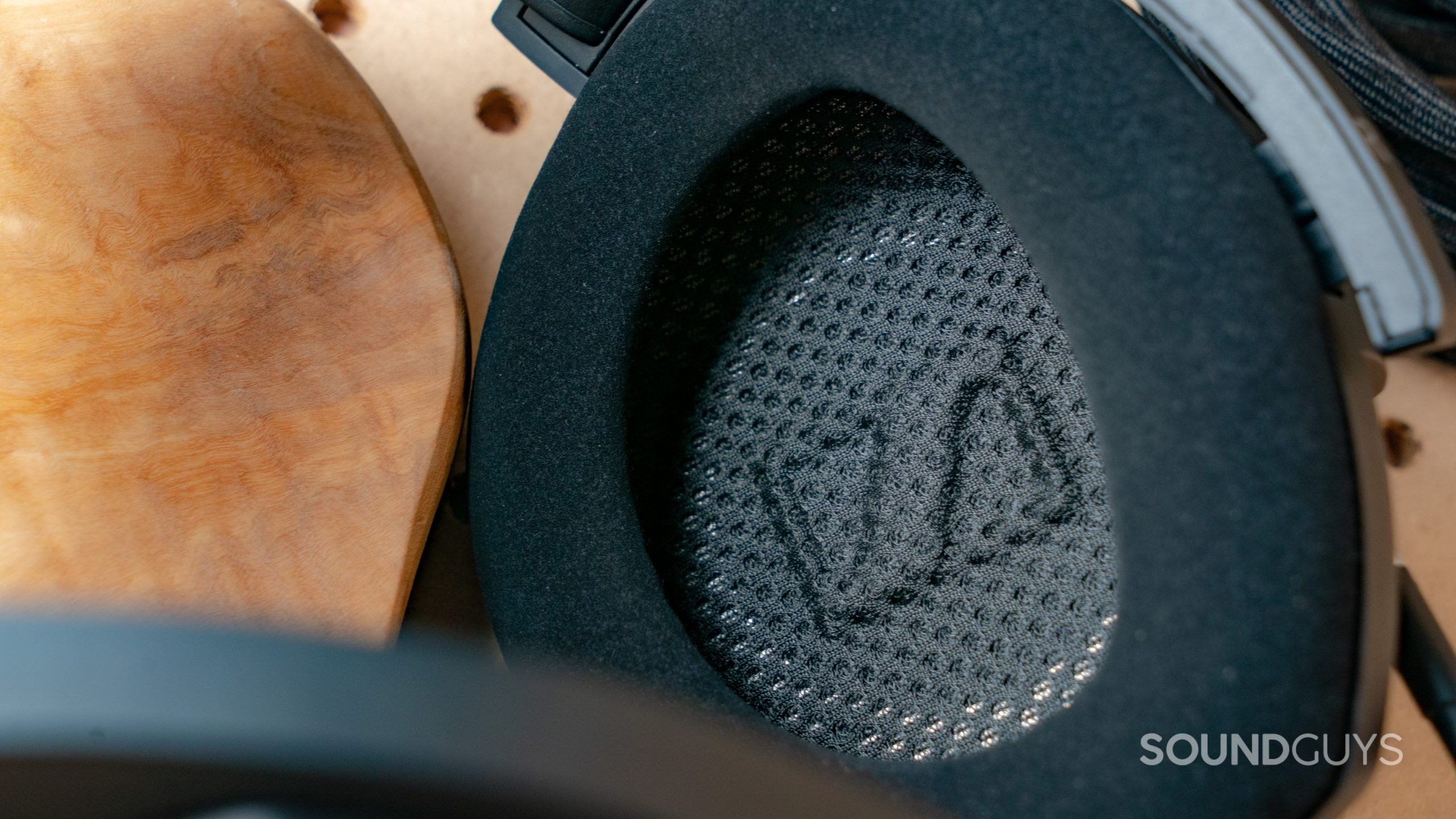
If you wear glasses, the velour pads are a very welcome reprieve from the faux leather pads of other headphones. However, acrylic glasses arms tend to make small sounds when they rub up against the padding. It’s annoying to be sure, but using metal frames or just not moving around a lot is enough to avoid this. Y’know, like you would while sitting at a computer and looking at the screen.
Though anyone looking seriously at the Sennheiser HD 800 S are doubtlessly going to be aware of what comes with open-backed cans, it’s worth pointing out that the headphones don’t block out much, if any outside noise at all. It’s an intentional choice, but it does mean that these headphones are going to be staying inside at your computer or listening station for reasons beyond the price tag.
No. Nobody needs to burn in headphones ever for any length of time. Just use your headphones.
How does the Sennheiser HD 800 S connect?
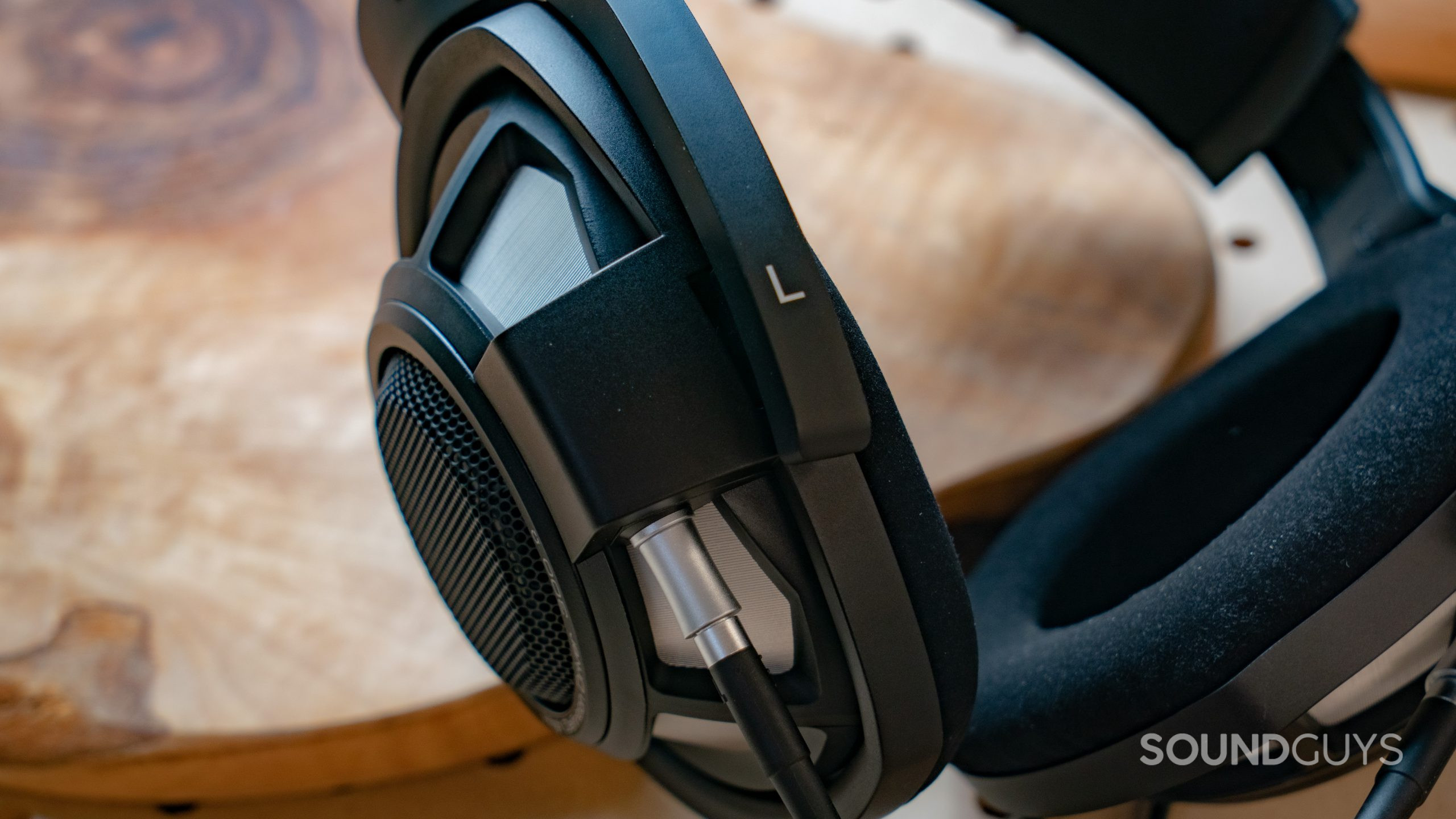
You can use either the included 1/4-inch TRS (unbalanced) or Pentaconn cable (balanced) included with the Sennheiser HD 800 S. Each of these cables use proprietary connectors at the headphone end, so if you’re looking for a replacement you’ll have to check the compatible models on Sennheiser’s website first before skipping off to your favored online retailer. Some users may feel left in the cold with no 3.5mm adapter, but that’s just the nature of the beast. If your source doesn’t have a 1/4 inch jack, you’ll need to pick one up.
Though the Pentaconn connector is quite rare to find among headphone amps, it’s nice to have that option available should you end up getting an amplifier with that connector available. Truth be told, picking the right cable boils down to whatever connector you have on your amp. For the vast majority of anyone reading this, it’s the big TRS plug.
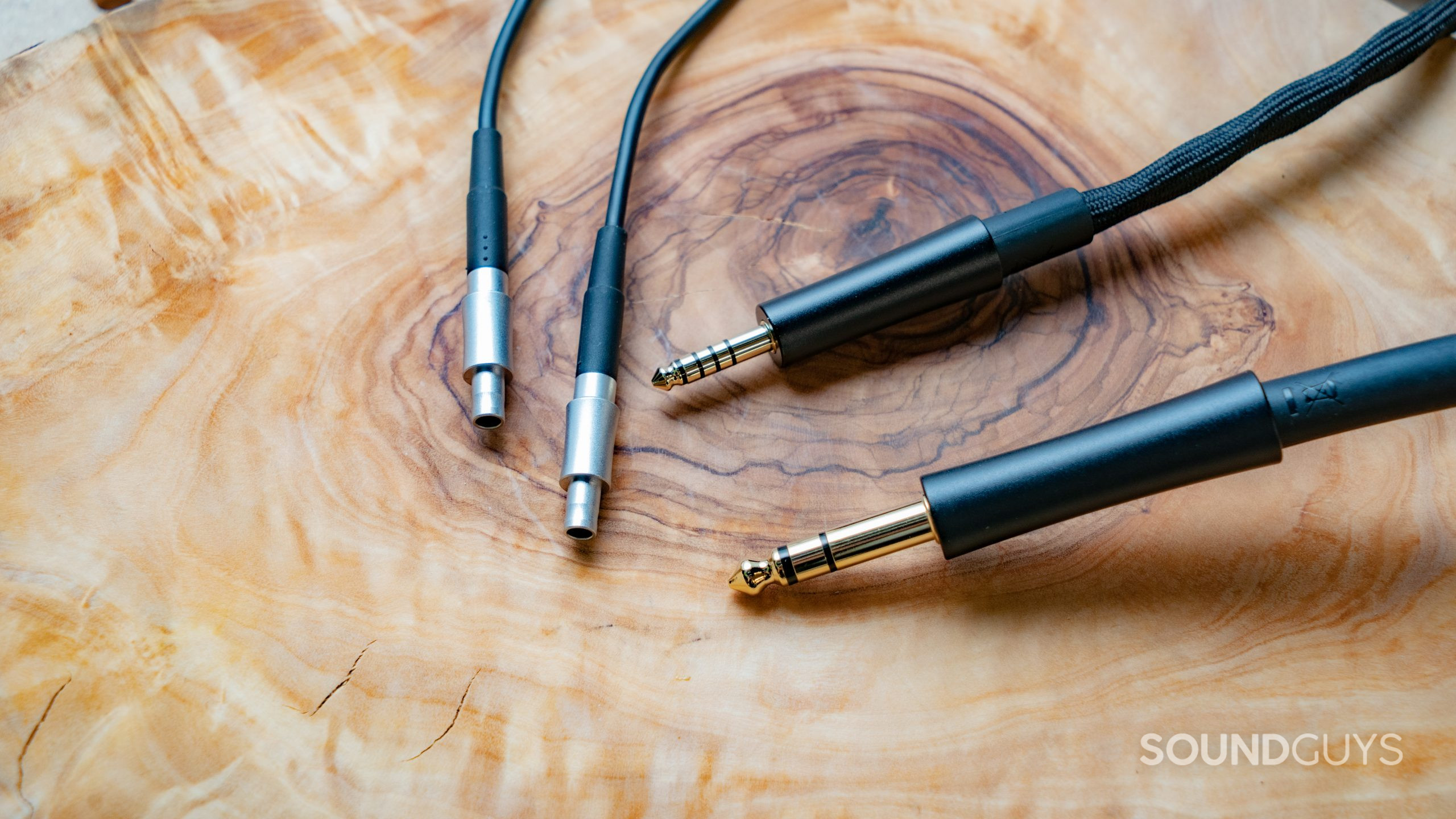
If you do hear any distortion that you’re confident didn’t come from the recording itself, you may want to explore getting an external DAC. Lots of enthusiasts and audiophiles do this anyway, simply to ensure the best possible listening conditions. However, in most cases it’s unnecessary if you listening device can support the files you want to listen to, and is relatively free from electronic interference.
You probably don’t absolutely need a headphone amp for the Sennheiser HD 800 S, but it’s a good idea to get one anyway for added headroom and the flexibility to equalize your headphones as you see fit. However, you don’t need to get anything fancy: an entry-level amp will do famously.
| Specification | Value |
|---|---|
Impedance | 300Ω |
Sensitivity | 102dB (1KHz) at 1 V |
How does the Sennheiser HD 800 S sound?
Objective measurements
Editor’s note: this review makes use of a hover-enabled glossary to describe sound quality, based on a consensus vocabulary. You can read about it here.
Multi-Dimensional Audio Quality Scores (MDAQS)
The chart below shows how the sound of the PRODUCT was assessed by the Multi-Dimensional Audio Quality Score (MDAQS) algorithm from HEAD acoustics.
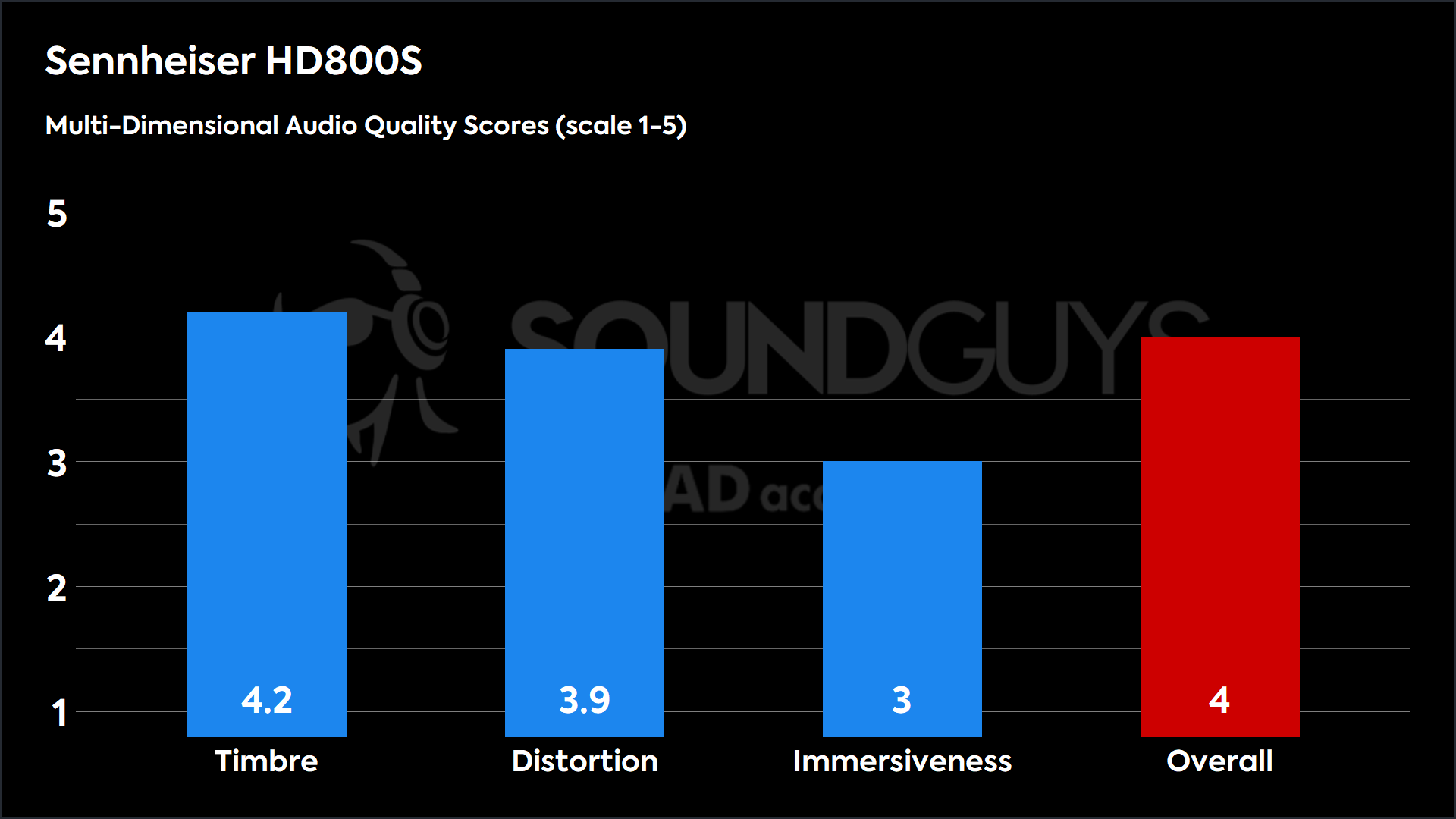
As the Sennheiser HD 800 S aren’t mass-market headphones, consumers with too much money and too little sense should probably not immediately jump to buying these headphones for a commute. Not only will the open-back nature of the headphones be an issue, but high-end audio is tuned differently to the point that most people wouldn’t rate the sound highly right out of the gate. Though most people would rate something like the AirPods higher upon first listen, the Sennheiser HD 800 S are the better headphones for audio quality for reasons stated above.
Timbre (MOS-T) represents how faithfully the earbuds reproduce the frequency spectrum and temporal resolution (timing information).
Distortion (MOS-D) represents non-linearities and added noise: higher scores mean cleaner reproduction.
Immersiveness (MOS-I) represents perceived source width and positioning: how well virtual sound sources are defined in three-dimensional space.
See here for an explanation of MDAQS, how it works, and how it was developed.
Should you buy the Sennheiser HD 800 S?
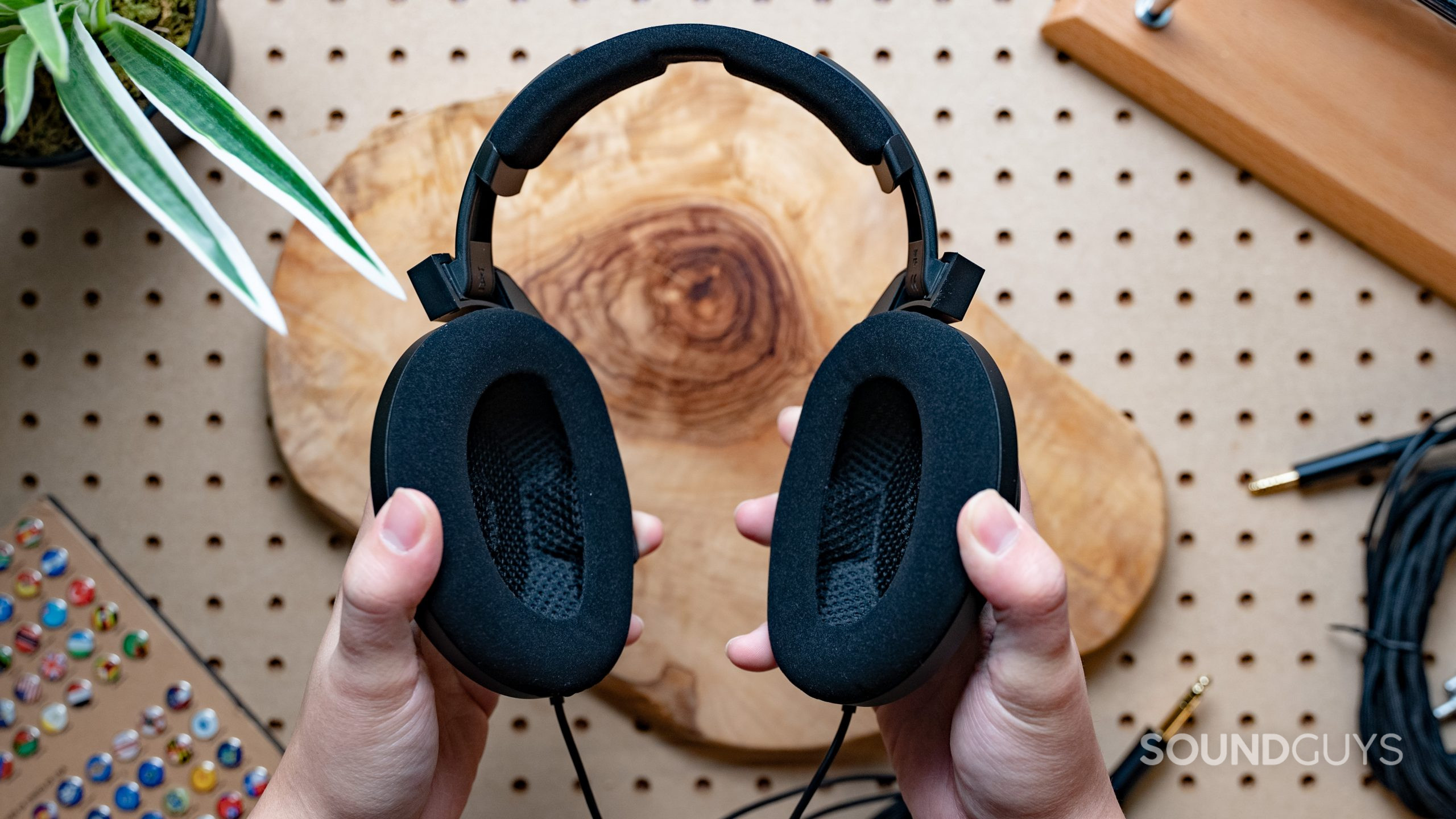
There’s a reason why Sennheiser’s HD 800 series often comes up in discussions of the best headphones available. It’s because they’re really, really well-performing headphones. However, spending over a thousand and half bucks on a set of headphones is a tall order for most. The Sennheiser HD 800 S is undoubtedly a great product, but it’s for a very specific type of buyer. Really, you should only have the Sennheiser HD 800 S on your radar if you’re looking to build a listening station and money is no object. There are plenty of lower cost options that could make you happy otherwise.
That said, the HD 800 line of headphones is venerated among enthusiasts for a reason, and that reason is you’re getting exactly what you pay for. This product is best suited for someone who really wants to equalize their headphones and listen for many hours a day. That’s exactly what the enthusiast crowd looks for in a set of headphones, and the Sennheiser HD 800 S fits the bill with only a few minor caveats.

What should you get instead of the Sennheiser HD 800 S?
Lots of Sennheiser’s higher-end headphones have sold very well over the years, and many of them are really decent, comfortable headphones that cost less than a third of what you’d shell out for the Sennheiser HD 800 S. Truth be told, we’re firmly in the land of diminishing returns when it comes to headphones, and you’ll spend a lot more to get a little bit of improvement.
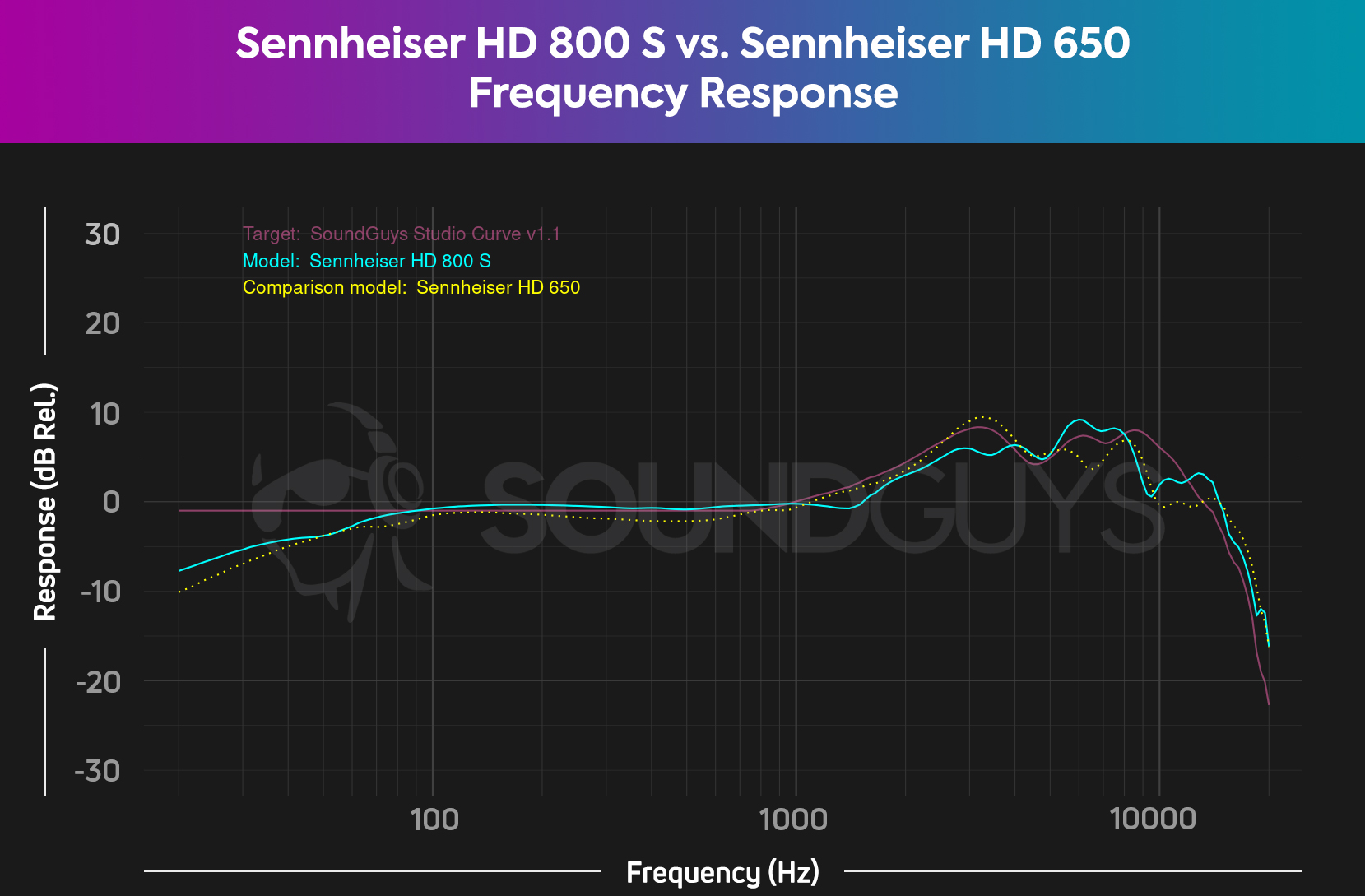
That’s why we recommend the HD 600 and HD 650 to anyone looking to spend a bit less on headphones, as they’re similar in many ways to the Sennheiser HD 800 S. However, what you trade off is the massive ear cups, and these headphones are slightly less forgiving when it comes to equalizing. Really though, the HD 650 solves probably the most audible deviation from our target in the high mids, so you wouldn’t likely have to do much more anyway. Additionally, the Sennheiser HD 600 sounds excellent out of the box, with little need for tweaking.
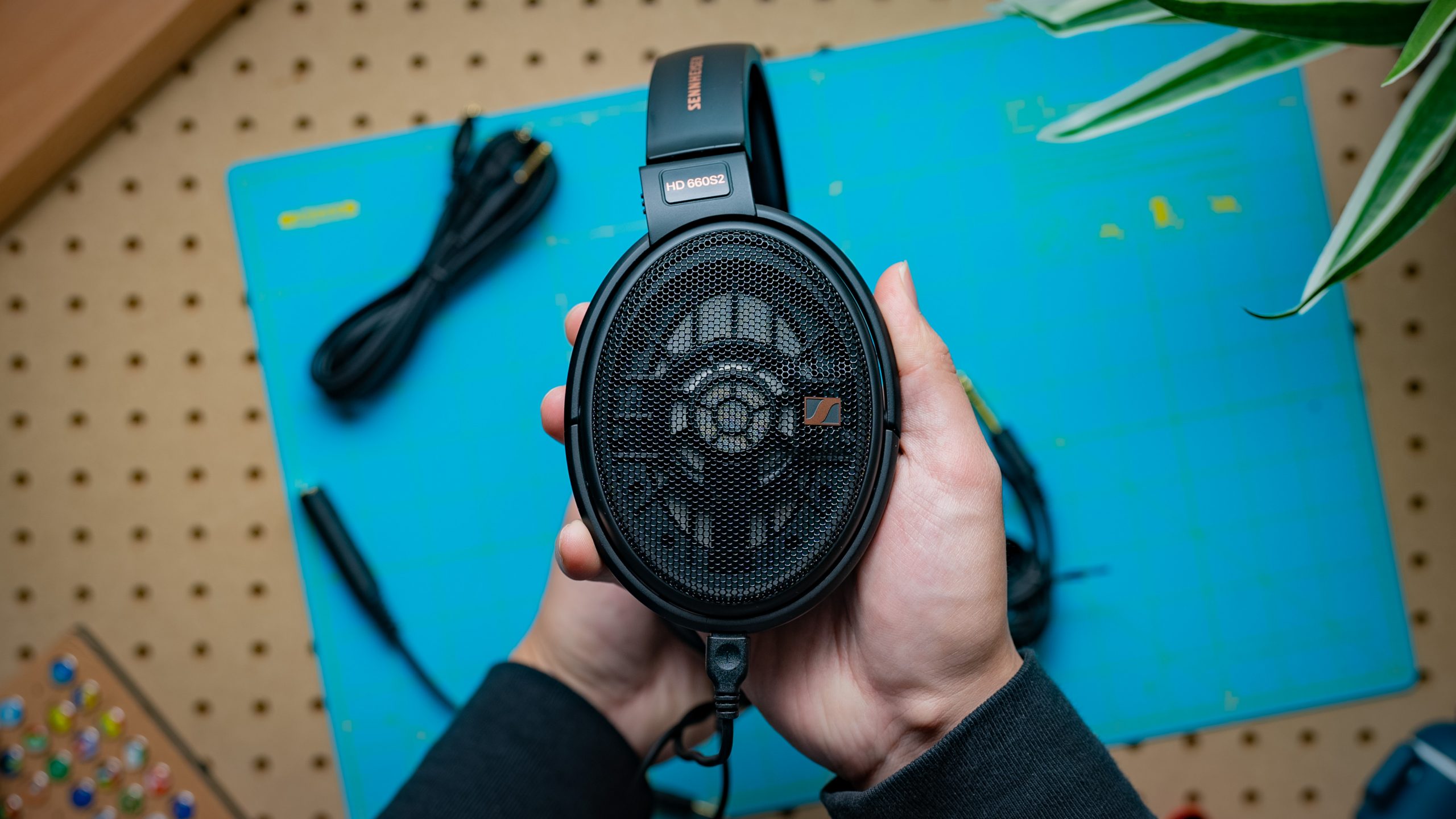
If you really want more bass than open-back headphones typically provide, you may want to look at the newer Sennheiser HD 660S2, as that has more emphasis on the lows than the rest of its HD 600-series stablemates. However, you may want to try it out first as it’s a bit different than its predecessors.

Though it’s not really in the same league when it comes to comfort and the illusion of space in audio, the Beyerdynamic DT 1990 Pro are similar enough in some ways to the Sennheiser HD 800 S that you may want to try it first before grabbing the more expensive headphones. The Beyerdynamic cans have better bass response, though there is a peak in the highs that you might want to tamp down a bit with an equalizer. Still, with the use of a more standard connector and only hanging a cable from the right side, you might find that the DT 1990 Pro is a little less clumsy than the Sennheiser HD 800 S— plus it’s only $529 at Amazon.
Of course, like it is with any high-end headphones, what’s right for you personally may not be the “better” headphones but the ones that you like more. Headphones as a hobby tends to veer off in strange directions away from the best-measuring products after a certain point, and the only way to figure out what you’re hoping for is to go out and listen to a bunch of stuff. While the Sennheiser HD 800 S is a truly special set of headphones, it’s not everyone’s ideal. Go exploring! If you’re looking at spending thousands of dollars already, I recommend looking at planar magnetic options, as those will allow you much more wiggle room when equalizing.
Frequently asked questions
You don’t need to overthink this. As an amplifier’s job is to get your signal to a sufficient level for you to enjoy, it doesn’t need to be some ostentatious or highly expensive thing. As long as your source is more powerful than an old smartphone, you’re really not going to have trouble getting sufficient power to the Sennheiser HD 800 S, as you only need 1Vrms to achieve 102dB. If you want to equalize your headphones, you may want a basic amp, as the headphones are fairly resistive at 300Ω.
Unless you need to use an XLR connector for the Sennheiser HD 800 S: no. There’s no performance upgrade to be had here, and any changes you might be able to achieve are cosmetic (outside of using a different connector).